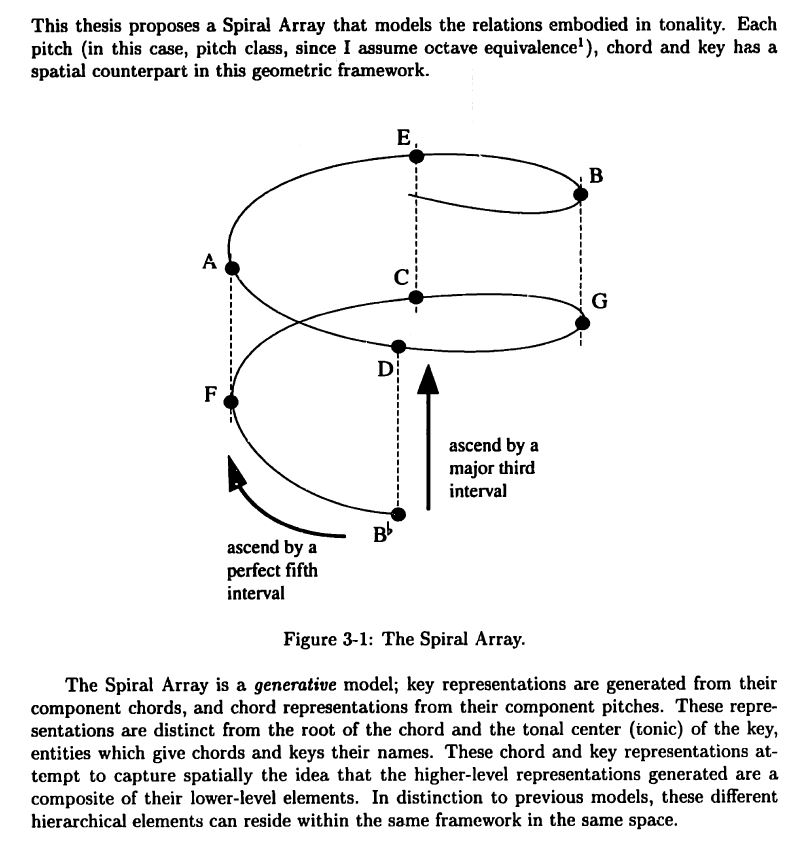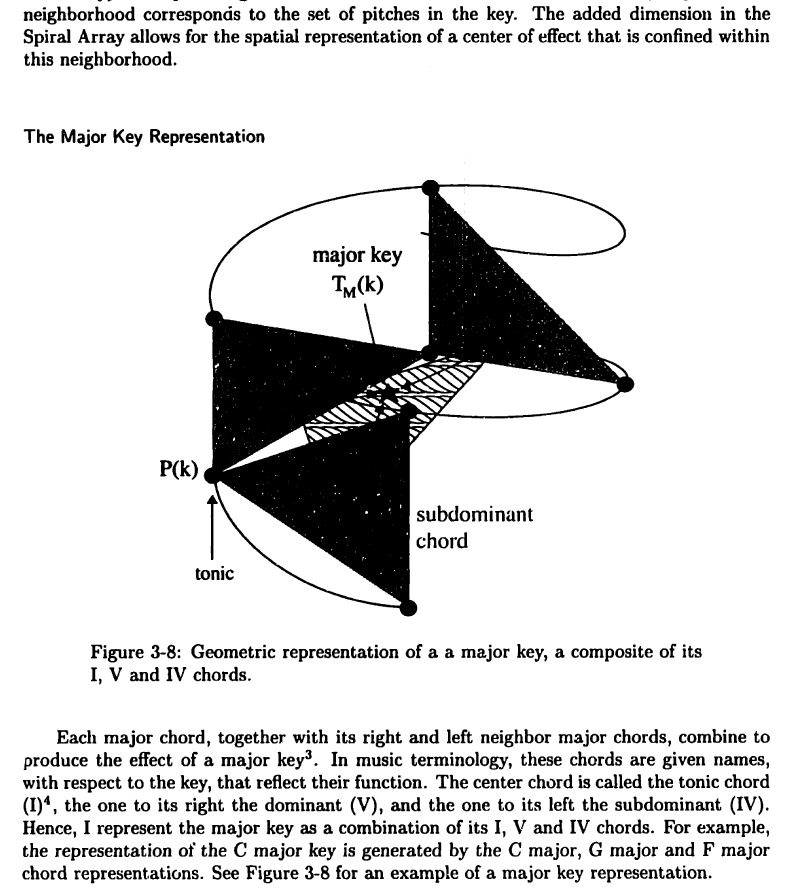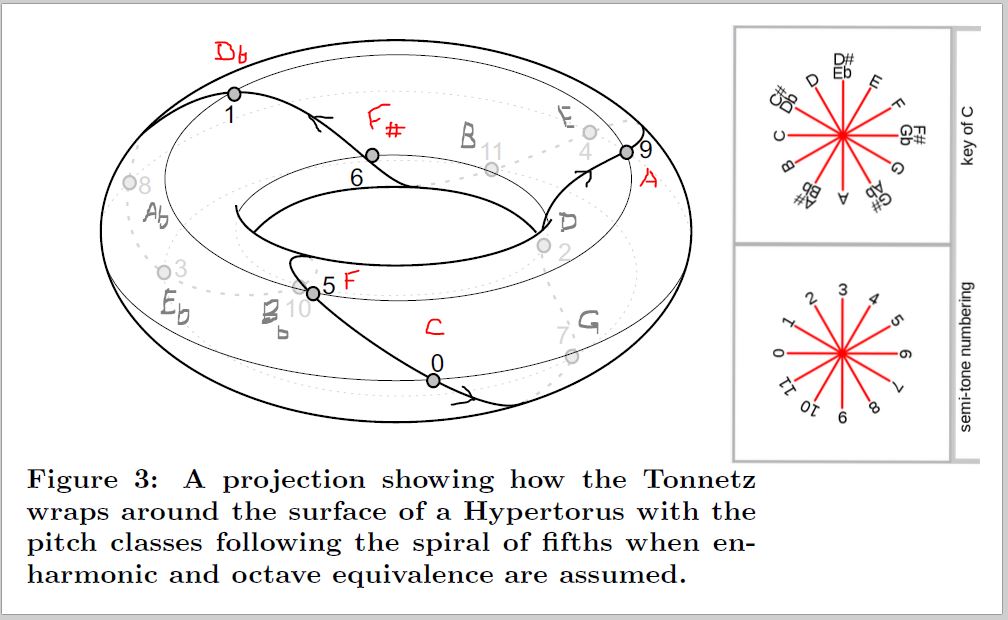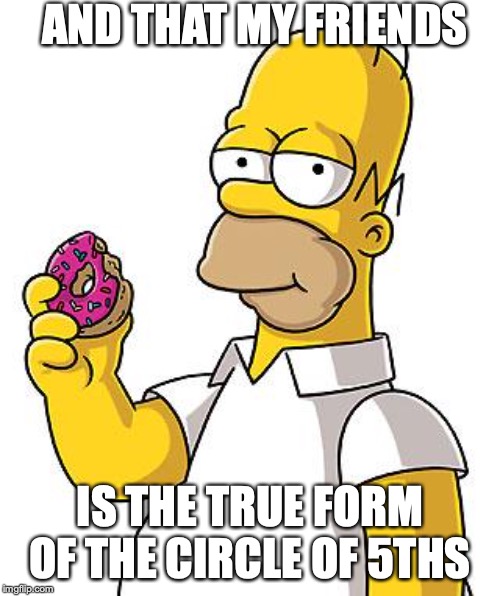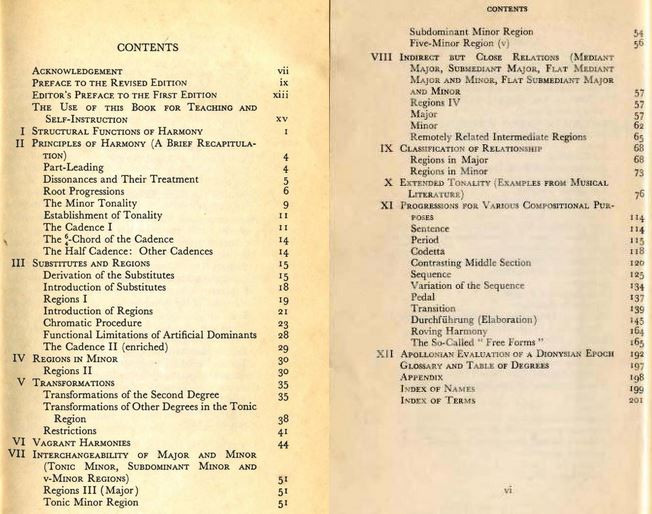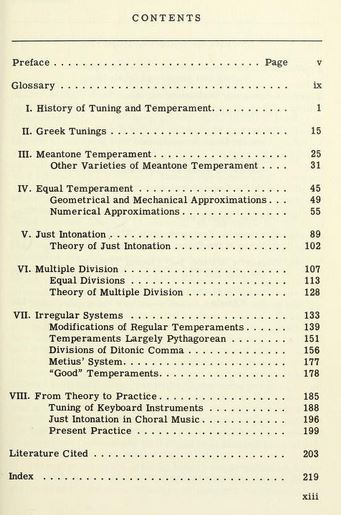|
kitarist -> RE: Which scales? (Dec. 4 2019 0:28:14)
|
quote:
This requires going into the physics I didn’t really want to.
Sorry, I was aware of all the physics stuff, and in more detail - Pythagorean tuning, just tuning, others, difference between tuning and temperament; regular vs. irregular. (also yes, of course same physics).
I haven't really found much on bottom-up justification of Ionian, except one author with a couple of papers, see Andrew Milne - "Tonal function in Harmonic Scales", 2005; everyone seems to go the historical/practice route.
Milne has another paper called "X-system" which spends a lot of time on tuning and strict mathematical derivations, p-limit systems etc. but this one I refer to above is especially relevant for our purposes.
He actually works out everything from first principles and key assumptions. He shows diatonic and some other (rare in practice) scales satisfy requirements for tonal function in harmony, but unfortunately seems to gloss over the flamenco flavour of the diatonic and only discusses in more detail its major and minor flavours, despite the diagrams he shows just above the section on Functional Consistency on page 10.
He lays out very clearly types of melodic and harmonic prototypes, [semitone-based] alterations in harmonic context, all laid out following from the few core assumptions, rather than from practice or history. You will not be surprised that the Neapolitan alteration is one of the three available ones, the other being parallel and shift (parallel: 3rd differs by semitone, e.g. C <-> c triads; Neapolitan: root and 5th differ by semitone, e.g. C <-> c# triads; shift: root, 3rd and 5th differ by semitone: e.g. C <-> C# or c <-> c# triads). Also derives prototypical progressions again just based on the core assumptions.
Anyway, so I guess bottom line, Ionian is the only one which does not require tweaking to work as a tonality. It seems though minor (tweaked aeolian) and flamenco (tweaked phrygian with the majorified tonic triad) are equally qualified. And I would like to extend/apply Milne's framework to flamenco tonality and see how it fits.
Now here is one of the several nice graphical representations I came upon (not from that author). This one is about showing the intervals in all seven scales derived from the modes (so again I would title these scales, not modes), shown as a clock with 12 semitone slices. (or imagine it is just tuning so the statements "perfect 5th" etc. below are exactly correct).
If you stare at these for a while, you start seeing useful things.
Like: a straight line cutting the clock face in half represents a tritone. The 5 is perfect 4th; the 7 is a perfect 5th.
The Lochrian scale is the only one where the 5th degree is not a perfect 5th interval (no "7" ) but is instead a tritone.
The Lydian scale is the only one where the 4th degree is not a perfect 4th (no "5") but is instead a tritone. It is also a mirror image of the Lochrian across the 0-6 axis.
And Phrygian is a mirror image of the Ionian across the same axis.
This also provides easy visual proof why a 7-tone scale within a 12-slot system must contain at least one tritone interval - because there are only 6 spots in one half of the clock face to have 6 "spokes" that can avoid being directly opposite each other; the 7th spoke will always end up directly across one of the other 6, thus making a straight line through, i.e. a tritone interval.

Images are resized automatically to a maximum width of 800px
|
|
|
|


